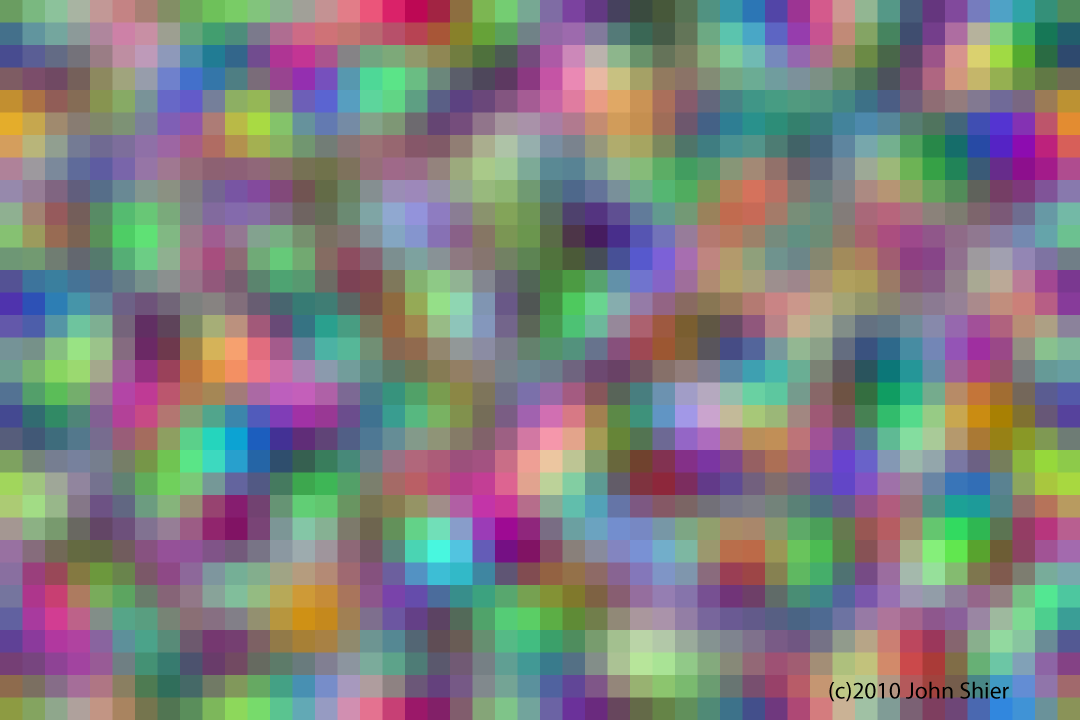
Scroll down for comments on this image.

Here randomness has been expressed as the sum of a series of products of cosine terms in x and y. The coefficients in front of these cosine terms are random numbers -- the usual way of representing "noise". There are up to 9 wavelengths from left to right and up to 6 wavelengths from top to bottom. This is quite unlike pure random noise in that the color glides smoothly from one part of color space to another as one moves across the image, i.e., the colors in adjacent squares are mutually correlated.
It can be seen that the shortest wavelengths tend to dominate here. This is what is called "white noise" with all wavelengths having equal (average) strength.
This process "samples" all of color space and every color is represented here. Different choices in setup could emphasize one region or another of color space.
Prints are available on a custom basis. Also mugs. See main page.